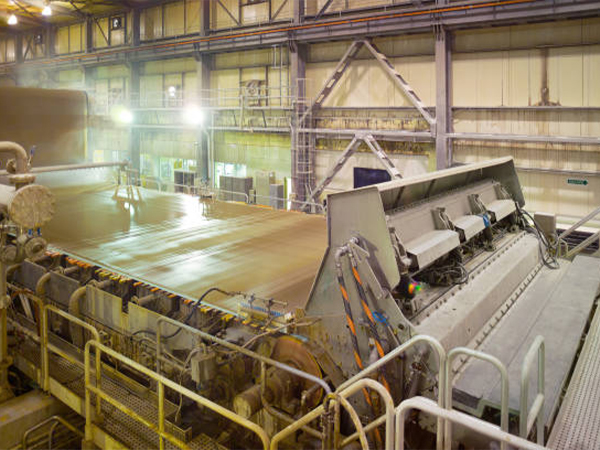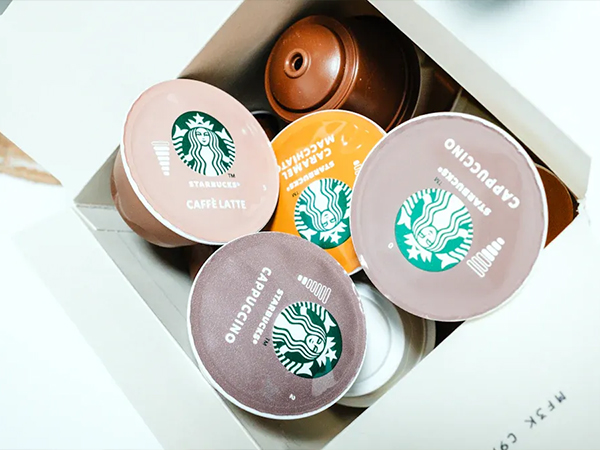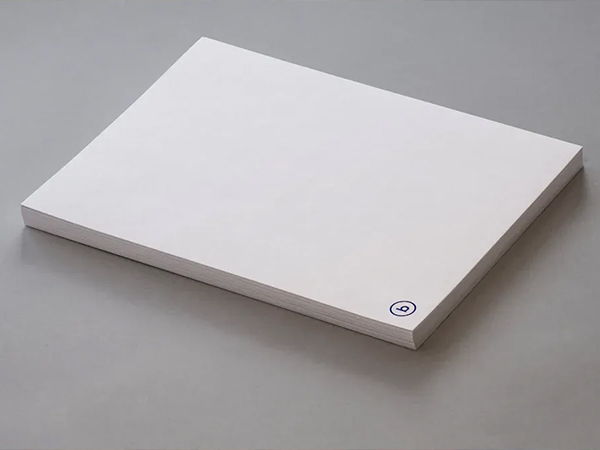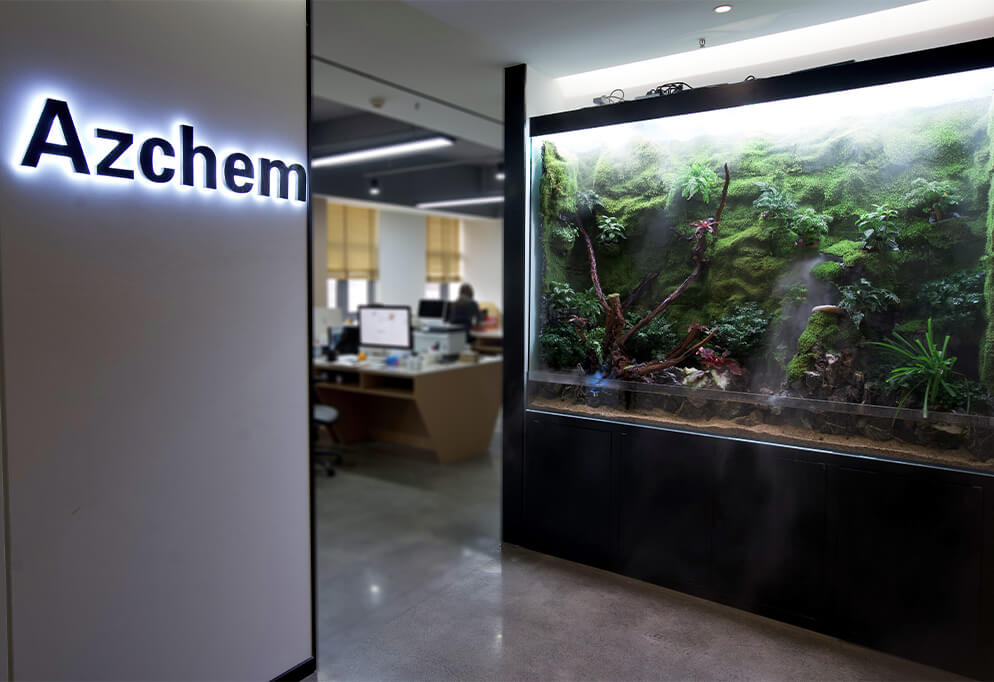
Barrier coatings empower you to use paper packaging for products that demand both durability and environmental responsibility. You face a dual challenge: keeping food fresh and safe while responding to strict sustainability standards. Recent advancements in barrier technology make it easier to meet these needs.
- Bio-based and water-based coatings replace petroleum-based options, increasing recyclability and reducing microplastic pollution.
- Biodegradable coatings, like PLA and PHA, offer non-toxic solutions that improve the environmental impact of paper packaging.
Key Takeaways
- Barrier coatings enhance paper packaging by protecting products from moisture, grease, and oxygen, ensuring freshness and safety.
- Sustainable options like bio-based and water-based coatings improve recyclability and reduce environmental impact, aligning with modern sustainability goals.
- Regulatory compliance is crucial; ensure coatings meet safety standards to protect food and adhere to guidelines for packaging materials.
- Choosing the right barrier coating involves balancing product protection, sustainability, and cost, while considering consumer expectations for eco-friendly packaging.
- Stay informed about industry trends and innovations in barrier coatings to maintain a competitive edge and support environmental responsibility.
Barrier Coatings Overview
What Are Barrier Coatings
Barrier coatings transform ordinary paper into a high-performance packaging material. You rely on these coatings to protect food and other sensitive products from moisture, grease, and oxygen. They create a thin, invisible layer on the paper surface, blocking unwanted substances and preserving product quality. You see barrier coatings used in everything from snack wrappers to takeout containers. Their main purpose is to keep food fresh, safe, and appealing throughout its shelf life.
Barrier coatings play a vital role in food safety and freshness. The table below highlights their main functions:
| Function | Description |
|---|---|
| Water and moisture vapour | Prevents absorption of liquids, maintaining structural integrity and preventing product drying out. |
| Oil and grease penetration | Protects packaging from grease transfer, ensuring better handling and shelf appearance. |
| Gases and aromas | Controls the exchange of gases and aromas, enhancing shelf life and preventing cross-contamination. |
| Oxygen scavenging | Limits oxygen reaction with food, improving shelf life and preserving product quality. |
How They Work
You benefit from barrier coatings because they act as a shield between the packaged product and external threats. The coating’s composition determines its effectiveness against water, oil, and gases. For example, water-based coatings resist moisture, while bio-based options can block grease and oxygen. You select the right coating based on the product’s needs and the packaging’s intended use.
Regulatory compliance is essential when you choose barrier coatings for food packaging. You must follow strict guidelines to ensure safety:
- Adhesives are classified as indirect food additives, requiring functional barriers to prevent migration into food.
- Specific regulations (175.105) outline allowed substances in adhesive formulations and their conditions of use.
- A functional barrier must separate food from adhesives, or limits on adhesive contact must be adhered to.
- Regulations categorize food contact paper based on food type, detailing components for aqueous, fatty, and dry foods.
- Substances meeting GRAS criteria or previously sanctioned can be cross-referenced for use in coatings, but must comply with specific regulations.
- FDA compliance requires materials to be made from approved raw materials or through the Food Contact Notification system.
- Materials can be exempt from regulations if a physical barrier prevents migration to food.
You must also consider evolving sustainability standards. Many brands now prefer coatings that support recyclability and compostability, helping you meet both environmental and regulatory demands.
Protection Needs
Moisture and Oil Resistance
You need packaging that stands up to moisture and oil. Without the right protection, paper absorbs water and grease, leading to soggy packaging and stained surfaces. Barrier coatings solve this problem by creating a shield that keeps liquids and oils from penetrating the paper. This protection ensures your products arrive fresh and your packaging looks clean and professional.
The effectiveness of these coatings is measured using industry-standard tests. The table below summarizes key performance indicators:
| Measurement Type | Value Achieved | Description |
|---|---|---|
| Moisture Vapor Transmission Rate (MVTR) | < 10 grams/100 in²/day or < 150 grams/m²/day | Lower values mean better moisture barrier properties. |
| Cobb Value | < 1 grams/m² | Lower values show higher water resistance. |
| Kit Test Rating | Scale of 0 to 12 | Higher numbers indicate better oil and grease resistance. |
When you select coatings with low MVTR and Cobb values, you ensure your packaging resists water and oil. A high Kit Test Rating means your packaging will not show grease stains, even with oily foods.
Tip: Choose coatings that meet these benchmarks to maintain product quality and brand reputation.
Oxygen and Aroma Barriers
You also need to protect your products from oxygen and aroma loss. Oxygen can cause food to go stale, lose nutrients, or develop off-flavors. Barrier coatings limit oxygen from entering the package, which helps keep food fresh and flavorful.
- These coatings reduce oxygen ingress, extending shelf life and maintaining product quality.
- They help prevent staleness, rancidity, and nutrient loss by blocking oxygen.
- Oxygen scavengers can be added to remove excess oxygen, further protecting your products.
You find these coatings especially important for dry foods like cereals, powdered milk, coffee, and snacks. They help preserve flavor and freshness, even during long shipping times. As e-commerce grows, you need packaging that keeps products safe and appealing until they reach your customers.
Sustainability Factors
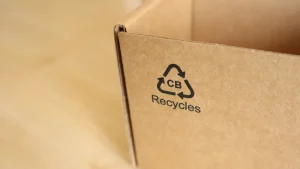
Recyclability and Compostability
You want packaging that protects products and supports a circular economy. Recyclability and compostability have become essential features for modern paper packaging. When you select barrier coatings, you must consider how they affect the end-of-life options for your packaging. Some coatings make recycling difficult, while others allow paper fibers to be recovered and reused.
Compostable coatings offer another sustainable path. You can choose coatings that break down in home or industrial composting environments. The following table highlights key certifications for compostable barrier-coated paper packaging:
| Certification Name | Certifying Body | Description |
|---|---|---|
| OK Compost Home | TÜV Austria | Certified home-compostable coating for food packaging. |
| DIN EN 13432 | N/A | Standard for compostable materials, ensuring biodegradability in industrial composting settings. |
When you use certified compostable coatings, you help reduce landfill waste and support responsible disposal. Many compostable coatings also provide excellent resistance to liquids, fats, and grease, and remain stable at high temperatures.
Note: Always check for recognized certifications to ensure your packaging meets compostability standards.
Regulatory Compliance
You face a complex regulatory landscape when choosing barrier coatings for food packaging. Regulations vary by region and often change, which can impact your product development and market entry. The table below summarizes major regulations affecting barrier coatings:
| Region | Regulation/Initiative | Impact on Barrier Coatings |
|---|---|---|
| European Union | Single-Use Plastics Directive (SUPD) | Encourages recyclable or compostable coatings, driving R&D in bio-based materials. |
| United States | California’s Proposition 65 on PFAS | Promotes shift to fluorine-free alternatives like acrylic or polyester-based barriers. |
| General | Food safety and environmental sustainability guidelines | Shapes market dynamics, prompting innovation in compliance with safety standards. |
Regulatory changes often require you to reformulate products and invest in new testing. You may face longer development times and higher costs as you adapt to evolving standards. The lack of global standardization means you must navigate many different frameworks, which increases compliance costs and can delay your product launches.
Tip: Stay updated on regional regulations and invest in flexible solutions to maintain compliance and market access.
Types of Barrier Coatings
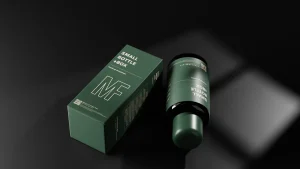
Conventional Options
You often encounter conventional barrier coatings in the paper packaging industry. These coatings have set the standard for protection but present challenges for sustainability. The most common types include plastic, wax, and aluminum-based coatings. Each offers unique advantages and drawbacks.
| Coating Type | Barrier Performance | Environmental Impact |
|---|---|---|
| Plastic | Superior moisture barriers for extended storage | Long decomposition time (over 500 years) |
| Waxed Paper | Adequate protection, breathable for food applications | Biodegradable in 2-4 weeks, made from over 90% renewable materials |
| Aluminum Foil | Complete barrier properties | Energy-intensive production, higher carbon footprint |
Plastic coatings, such as polyethylene, provide excellent moisture resistance and extend shelf life. However, they persist in the environment for centuries and complicate recycling. Wax coatings, made from paraffin or natural waxes, offer moderate protection and biodegrade much faster. Aluminum foil delivers a total barrier against moisture, oxygen, and light, making it ideal for sensitive products. Yet, its production consumes significant energy and increases the carbon footprint.
You also see other conventional coatings like solvent-based and extrusion coatings. These options have served the market for decades but now face scrutiny due to their environmental impact.
Note: Conventional barrier coatings, especially those made from petroleum-derived polymers, hinder recycling and contribute to waste management issues. They can also introduce microplastics into the environment, posing long-term risks.
Sustainable Solutions
You now have access to a new generation of barrier coatings designed for sustainability. These solutions focus on recyclability, compostability, and reduced environmental impact. Water-based and bio-based coatings lead this shift, offering protection while supporting circular economy goals.
| Date | Company | Product Name | Description |
|---|---|---|---|
| September 2025 | Sappi Europe | Guard Pro OMH/OHS | Recyclable, mono-resource paper with high-end protection |
| February 2025 | Cosmo Specialty Chemicals | OGR barrier coatings | Sustainable oil and grease resistance |
| 2024 | N/A | Water-based coatings | Low VOC emissions, strong ecological protection |
| 2025-2034 | N/A | Bio-based coatings | Derived from renewable sources, rapid market growth expected |
Water-based coatings dominate the market due to their low emissions and compatibility with recycling processes. Bio-based coatings, made from renewable materials like starch, cellulose, or even tomato peels, align with your sustainability goals. These coatings break down more easily during recycling and composting, reducing contamination and waste.
You also find mineral-based coatings and innovative solutions like tomato peel-derived films. These alternatives provide effective barriers against moisture and grease while supporting recyclability.
Tip: Choose functionalized barrier coatings that are recyclable within paper mills. Water-soluble and dispersion coatings allow efficient fiber recovery, increasing the yield of usable paper during recycling.
Impact on Recycling and End-of-Life
Your choice of barrier coating directly affects the recyclability and end-of-life options for paper packaging. Conventional coatings, such as polyethylene and fluorinated compounds, do not break down during repulping. They contaminate the paper pulp and reduce the quality of recycled fibers. This contamination leads to increased waste and higher processing costs.
Sustainable coatings, like those developed by Impermea, decompose during repulping. They preserve the recyclability of paper products and support a circular economy. Water-based and dispersion coatings facilitate fiber separation, resulting in higher yields of usable material. However, you should monitor the downstream effects on water quality in papermaking processes, as these remain under study.
- Conventional coatings complicate recycling and contribute to landfill waste.
- Sustainable coatings reduce environmental impact but may still present challenges, such as microplastic formation.
- Both types can introduce microplastics into waterways, highlighting the need for ongoing innovation.
You play a key role in driving the adoption of sustainable barrier coatings. By selecting recyclable and compostable options, you help reduce waste and support environmental goals.
Balancing Protection and Sustainability
Trade-Offs
You face important decisions when choosing packaging solutions. Balancing product protection with sustainability often requires you to weigh several factors. The table below highlights the main trade-offs between barrier-coated paper packaging and traditional plastic packaging:
| Aspect | Barrier-Coated Paper Packaging | Plastic Packaging |
|---|---|---|
| Functionality | Limited under certain conditions | High across various conditions |
| Cost | Higher per article | Lower due to established processes |
| Environmental Impact | More eco-friendly | Less eco-friendly due to plastic waste |
| Innovation Requirement | Requires new materials and equipment | Established technology available |
Barrier-coated paper packaging offers you a more eco-friendly solution, but you may encounter higher costs and limitations in functionality compared to plastics. You must invest in new materials and equipment to achieve the desired barrier performance. Plastic packaging delivers reliable protection and lower costs, but it creates significant environmental challenges.
When you evaluate barrier coatings, you consider several criteria to strike the right balance. The following table summarizes how brands assess these choices:
| Criteria | Description |
|---|---|
| Environmental Impact | Preference for coatings made from renewable, biodegradable, or compostable materials. |
| Barrier Performance | Effectiveness against moisture, grease, oxygen, and other contaminants. |
| Application Compatibility | Ease of coating application on various paper and board substrates. |
| Cost Efficiency | Total cost including raw materials, application, and lifecycle considerations. |
| Regulatory Compliance | Adherence to environmental and safety standards such as FDA, EU regulations. |
| Supply Chain Reliability | Consistent delivery, scalability, and vendor support. |
| Innovation & R&D | Investment in new formulations, nanotechnology, or other advanced solutions. |
| Customer Support & Service | Technical assistance, training, and after-sales support. |
You must prioritize environmental impact and regulatory compliance, but you cannot ignore cost efficiency and barrier performance. Your choices affect not only your sustainability goals but also your ability to deliver safe, high-quality products.
Tip: Regularly review your packaging strategy to ensure you meet both protection and sustainability targets. Collaborate with suppliers to stay ahead of regulatory changes and market trends.
Industry Trends
You must stay informed about the latest developments in barrier coatings. Several trends are shaping the future of paper packaging:
- The demand for sustainable and high-performance materials is rising.
- Innovations in bio-based and compostable coatings are becoming more prevalent.
- Advancements in nanotechnology are enhancing barrier coating performance.
- The growth of e-commerce is driving the need for effective barrier solutions.
- There is a heightened focus on food safety and hygiene.
You see the market for sustainable barrier coatings expanding rapidly. In 2023, the market reached USD 1.2 billion. Projections show growth to approximately USD 2.2 billion by 2028, with a compound annual growth rate of 7.8%. By 2033, the market could reach USD 5.6 billion, reflecting strong demand for eco-friendly packaging.
Callout: You can position your brand as a leader by adopting innovative barrier coatings that meet both protection and sustainability requirements. Monitor industry trends and invest in research to stay competitive.
Barrier Coatings continue to evolve, offering you new ways to protect products and support environmental goals. You play a vital role in driving this transformation by making informed choices and embracing new technologies.
Brand Considerations
Choosing the Right Coating
You face many factors when selecting a barrier coating for your paper packaging. Your choice must balance product protection, sustainability, and cost. Paper alone cannot protect moisture-sensitive or perishable items. You need coatings that enhance durability and resist liquids. However, sustainable coatings often come with higher production costs. You may notice that these alternatives do not always match the performance of traditional plastics.
You also encounter inconsistencies in testing and certification. This can create confusion for you and your customers. You must ensure that your coatings meet both regulatory standards and your brand’s sustainability goals.
Tip: Work closely with suppliers and testing labs. This helps you verify that your coatings deliver the right balance of protection and environmental responsibility.
Consider the following when choosing a coating:
- Product type and shelf life requirements
- Desired barrier properties (moisture, oil, oxygen)
- Compatibility with recycling or composting systems
- Regulatory compliance in your target markets
- Total cost, including raw materials and processing
Supply Chain and Consumer Expectations
You must also address challenges across your supply chain. Sustainable coatings may require new equipment or changes in your production process. You might need to train staff or update quality control procedures. These changes can increase your operational costs.
Your consumers expect packaging that is both protective and eco-friendly. Many want clear instructions for recycling or composting. However, current recycling and composting infrastructure often falls short. This gap makes consumer education essential. You need to provide clear labeling and guidance to help customers dispose of packaging correctly.
- High production costs for sustainable coatings
- Performance trade-offs compared to conventional materials
- Confusing certification standards
- Limited recycling and composting infrastructure
Note: You can build trust by being transparent about your packaging choices. Share your sustainability journey and educate your customers about proper disposal.
You play a key role in driving industry change. By making informed decisions and communicating openly, you help set new standards for sustainable packaging.
You can achieve both protection and sustainability with advanced barrier coatings. Solutions like Azfc®081C deliver strong resistance to moisture, grease, and oxygen while supporting recyclability and food safety.
- Compliance with regulations ensures safe food contact.
- Recyclability and innovation drive circular economy goals.
- New coatings, such as Azfc®081C, support repulpability and reduce environmental impact.
| Step | Description |
|---|---|
| Environmental Impact | Choose biodegradable or recyclable coatings. |
| Barrier Performance | Test for moisture, grease, and oxygen resistance. |
| Regulatory Compliance | Confirm food safety and environmental standards. |
You help shape a sustainable future by collaborating across the industry and embracing new technologies.
FAQ
What makes a barrier coating sustainable?
You choose a sustainable barrier coating when it supports recycling or composting. Bio-based and water-based coatings use renewable materials. These coatings break down more easily, reduce microplastic pollution, and help you meet environmental goals.
Can you recycle paper packaging with barrier coatings?
You can recycle paper packaging with many modern barrier coatings. Water-based and mineral coatings allow fiber recovery. Some plastic or fluorinated coatings hinder recycling. Always check for recycling certifications before you select a coating.
How do barrier coatings affect food safety?
You rely on barrier coatings to prevent contamination and spoilage. These coatings block moisture, oil, and oxygen. You must ensure coatings meet FDA and EU food contact regulations to guarantee safety for your customers.
Are compostable coatings suitable for all packaging types?
You use compostable coatings for packaging that will enter composting systems. These coatings work best for food service items and short-life products. Not all coatings suit every application. You should verify compostability certifications for your intended use.
What trends should you watch in barrier coating technology?
You see rapid growth in bio-based and water-based coatings. Nanotechnology improves barrier performance. Brands invest in recyclable and compostable solutions. You should monitor regulatory changes and consumer demand for eco-friendly packaging.

